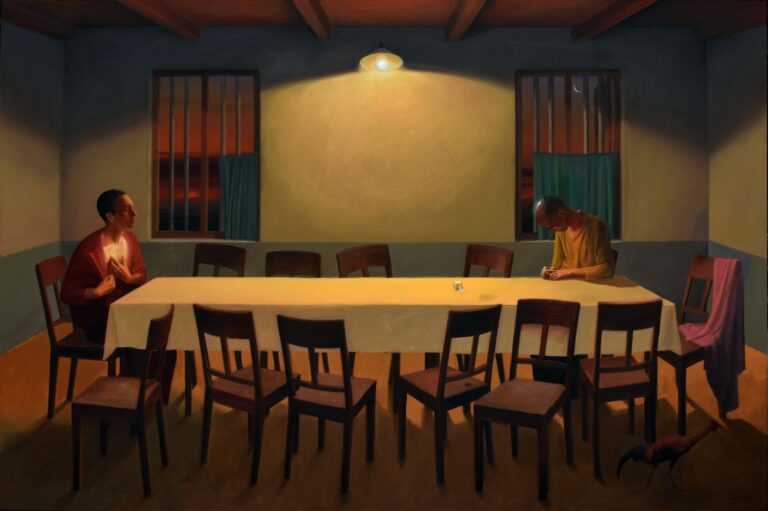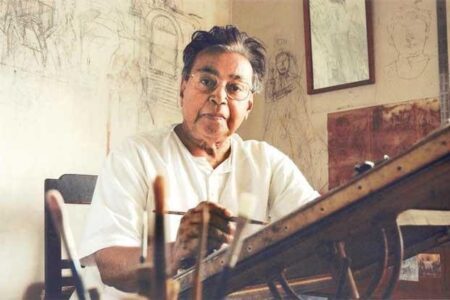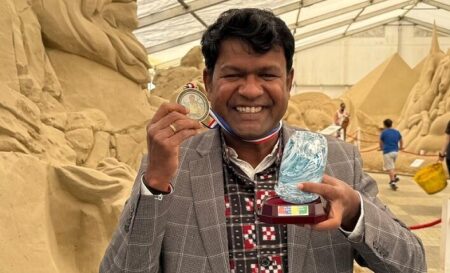How artist Tom Vattakuzhy creates ‘soulful conversations’.
Tom Vattakkuzhy’s paintings demand a different form of attention, or reflection, from the viewer. They seek contemplation, more than understanding; they convey stillness and silence, more than movement and action. Once you harness your mind towards the image, they begin to exude a deep, melancholic silence, which leads the viewer to a state of reflection that is turned inwards and outwards, enveloping or ‘worlding’ you in strange ways; you become not just a mute witness but a silent participant in that world.
Suffused with intense feelings for humanity, human figures and spaces constitute the core of these images; they portray surfaces and depths, figures and objects, structures and landscapes, which gradually assume a spectral quality, a haunting presence. Their profound inner silences gradually seep into us, filling us with a strange kind of melancholy; an overwhelming atmosphere of ethical emergency looms darkly over these images. In other words, it is a certain kind of keen and painful awareness about being in the world.
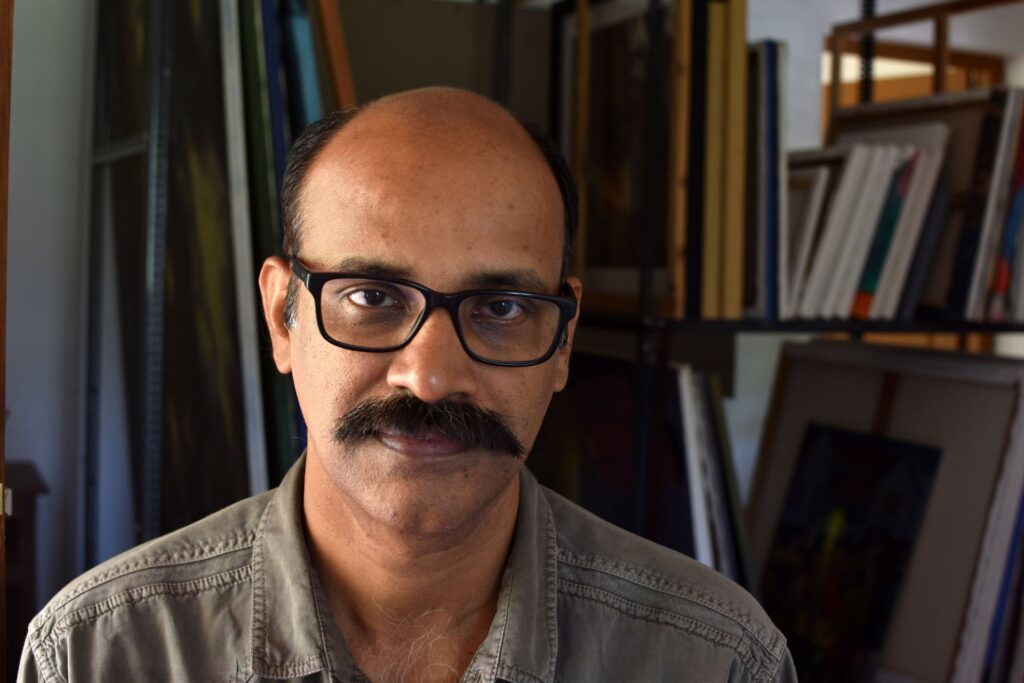
Human figures are central to Tom’s images, metaphorically, ethically and figurally. Interestingly, most of these figures are looking away or aside; often we see them from behind as if sharing their predicament and view or vision of the world.
Deconstructing Da Vinci
Spaces they inhabit or occupy are equally resonant, as are the spatial depths and expenses that unfold in these paintings. Light, perspective, figuration, depth of field, composition, colour pattern, tonalities, textures – all find an intense blend in Tom’s paintings to invoke a meditative mood in the image and from the viewer.
Take, for instance, the painting ‘A Soulful Conversation’. An empty table in the middle dominates the scene, there is an upturned bottle of salt on it, and the table is surrounded by thirteen chairs, of which only two at the opposite sides are occupied. Seated on the chair at the left end that seemingly presides over the ‘Last Supper’ is a saintly figure with his hands over his chest that beams light, and at the other end is a man sitting with his head bowed down in guilt or repentance.
It is a dimly-lit room with a single bulb in the middle mounted on the wall; through the windows at the far end, one can see the sunset in one and moonrise in the other. The chairs around the table are in disarray as if those who sat on them have all left the room. As if unable to bear the effulgence of the saintly figure coupled with the sense of barrenness that fills the room, the man at the opposite end, clad in fading army green T-shirt is looking down; the distance that extends between them seems unbearably apart, which is all the more so due to the dull whiteness of the cloth spread across the bare table.
A liminal stillness one feels at dusk and a divine silence fill the room, which seems to be on the verge of a moment of revelation (or redemption?). The painting draws a lot of visual and thematic parallels from Leonardo Da Vinci’s Last Supper: the frontal setting of the table, the windows at the far end, the rafted roof above, the thirteen seats, the fallen salt bottle, the table cloth, the ochre upper garment hanging on the chair etc – all evoke the legendary painting.
But the inner power of this painting emanates from the absence of people and from non-presence of various kinds, of the others, from the vacant chairs, the lonely objects and muted actions, the bareness of the table, the depressing-yellow light of the lone bulb at the centre, the view of the sky through the windows that seems so far away, the contrasting postures and demeanour of the two men seated on opposite sides – all envelop us in a melancholic embrace of contemplation.
Likewise, in the paintings Girl with Bubbles and Teenager also, we encounter a certain kind of silence, as if the painter has put the passage of time to a stop, and brought the world to a standstill, to force us to contemplate them.

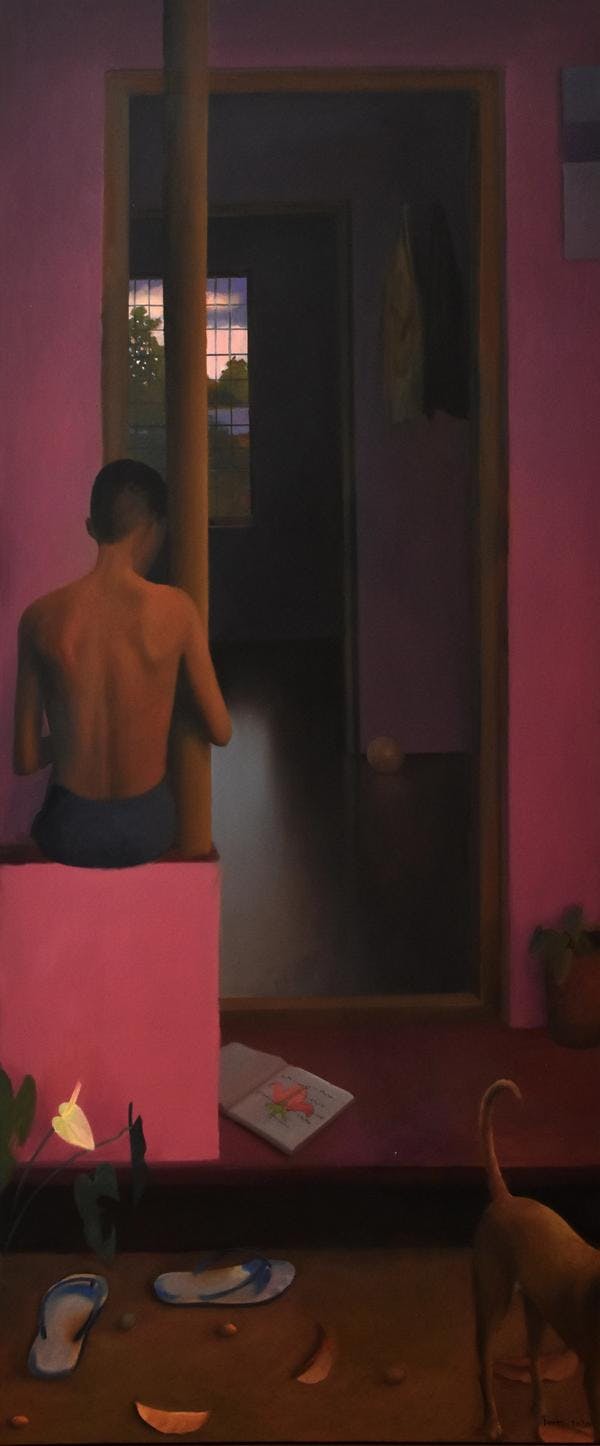

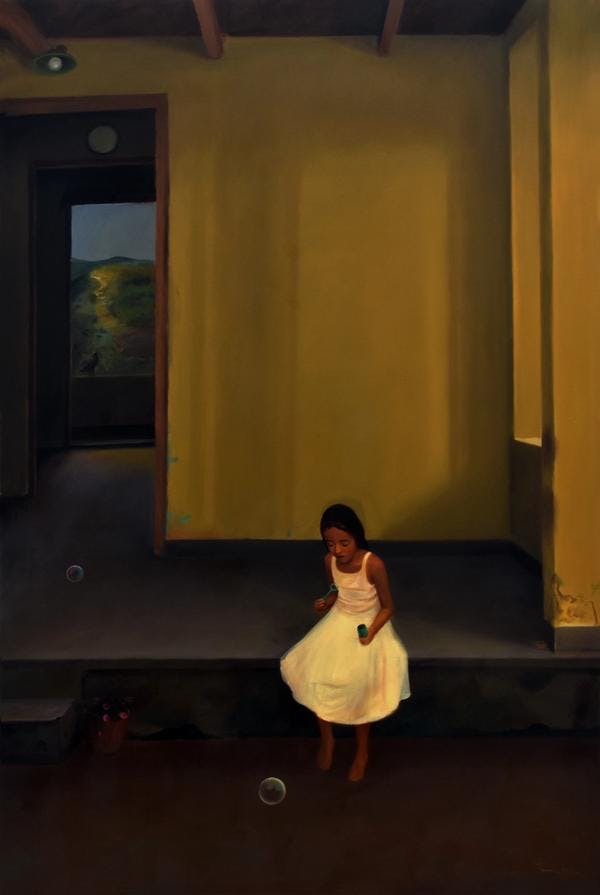

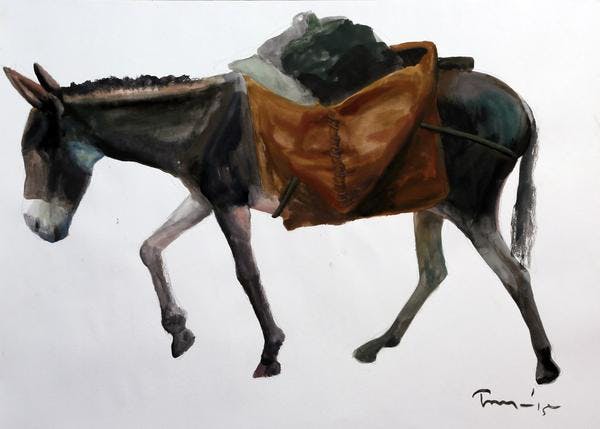

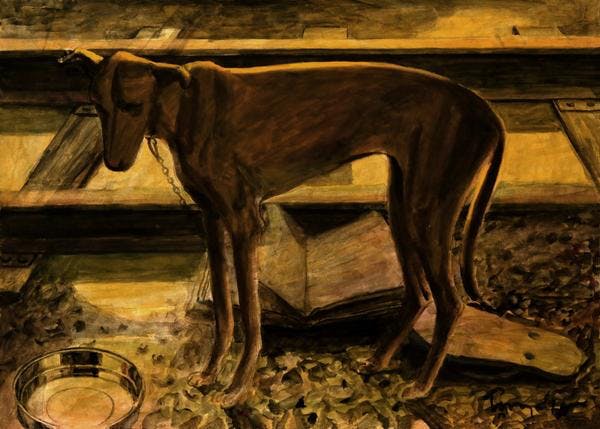

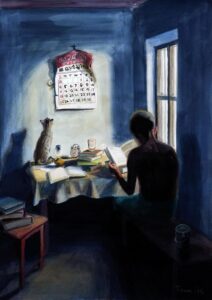
Mundane and magical
These two paintings are complementary in terms of their composition, colour tones, mood and figuration. The paintings portray a very mundane image of the veranda of a small house where a girl in one and the boy in the other are seated; the girl faces us, while the boy is sitting with his back to us.
The dramatic intensity is created through the juxtaposition of human presence with several planes or depths of field: we can see the front yard, the veranda, the interior of the house, the walls at the front and back of the house, the window at the end, and the landscape beyond seen through it. Veranda, where the boy and girl sit is a liminal space, one that is neither interior nor exterior; likewise, the lighting and mood indicate the liminal atmosphere of dusk, neither day nor night.
The blank and dull monochromatic walls dominate both the paintings making the scene all the more profoundly mundane and ordinary, yet magical and spectral. We can see objects in the front yard and veranda – the floating bubble blown by the girl, the fallen leaves, a dog, footwear, flower pot, book with a flower painted in it, the clothes hanging on the wall in the room, a ball lying on the floor etc.
In the midground between the veranda and the wall, the light coming through the window is reflected on the floor. The view beyond the window is an idyllic landscape of winding paths and verdant greenery, trees lit up by fireflies standing tall against the reddening sky.
Human drama
There is a certain oneiric quality to the atmosphere that is created through this layering of planes and the juxtaposition of humans and objects against the geometry of the house and the geography of the landscape. The lonely girl, the bubble she blows, the desolate space she occupies, the rounded light bulbs above, and the vast landscape behind; and in the other, the painted notebook, the flower, leaves and chappals on the ground with the boy sitting on the veranda leaning on a pillar, immersed in himself – there is kind of paring down of everything to their bare essentials, and a grinding to a halt of time here, that invite us into a magical space and time.
In the other paintings too, we see this interplay between human figures, houses, landscapes, skyscapes, objects and animals. The series of Gouache on Paper paintings convey narratives of different kinds; there is a certain kind of intense human drama that unfolds in them – some of them are overtly political, while others convey human conditions and predicaments of various kinds.
What binds them together is the way in which Tom approaches the figural to portray poignant moments of human experience and expression. An atmosphere of uncertainty, angst, and melancholy loom large over these figures – whether it be angels, humans, aged, young or adolescent, or animals like dogs, donkeys, cats.
Life of contemplation is a recurrent theme in these works; we see people immersed in themselves, blowing bubbles, engrossed in reading, gazing out into distances or the void that looms above. In contrast, the living spaces they occupy are bare and sparse, dominated by the monochromatic monotony of the walls.
Life, unravelled
Tom Vattakkuzhy’s paintings – in their imageries, thematics, approach and technique – belong to the long tradition of figurative painting – one that confronts the world in all its diversity of surfaces and depths, and the human predicament within it frontally, in all its complexity.
The intense power (oftentimes sinister energy) of images draws from their deep belief in and at the same time, despair about humanity. The more one gazes at these images, Tom’s intense love and passion for, and deep ethical commitment to Life becomes all the more palpable and infectious.
The show is on at Lokame Tharavadu in Alappuzha. To read more stories on the art event, click here.

